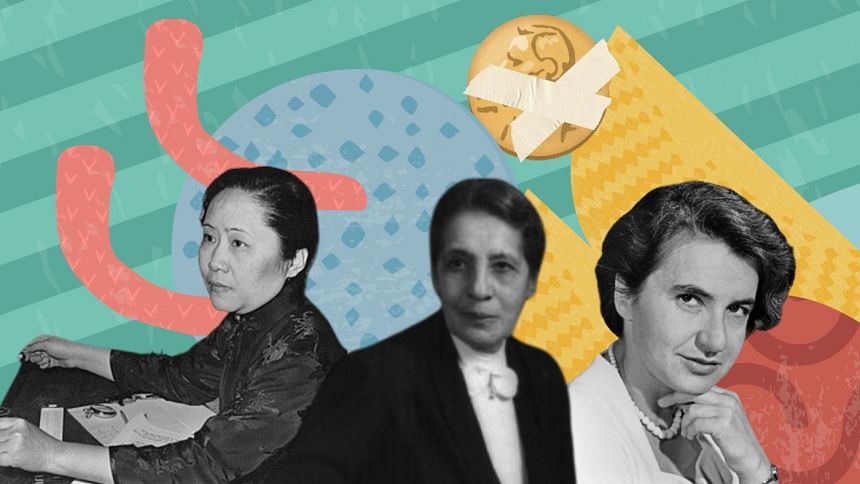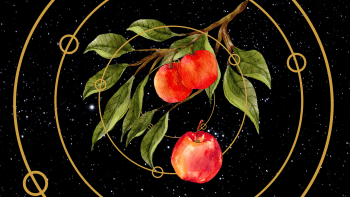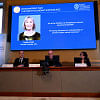124 years on, gender gap in Nobel Prize still persists

Every October, the Nobel Prize committee awards the coveted prize to laureates in six categories: physics, chemistry, physiology and medicine, literature, peace, and economics. Economics was added in 1968 by an endowment "in perpetuity" from Sweden's central bank, Sveriges Riksbank.
Since December 10, 1901, when the first Nobel Prize was awarded in Stockholm, Sweden, only 66 out of 976 have been given to women. This year, there were 11 recipients―10 men and one woman (literature). The peace prize was awarded to Nihon Hidankyo, a grassroots Japanese organisation of atomic bomb survivors from Hiroshima and Nagasaki. As unlikely as it may seem, 2023 was a banner year for women―four female laureates stand opposite seven male honourees.
Clearly, the choice of who gets the Nobel Prize is heavily biased towards males. Physics has the worst record. Out of a total of 226 recipients, only five are women, with three being awarded in the last six years. The numbers, though disheartening, should not come as a surprise, because the Nobel Prize has a history of a sexist attitude of not recognising the groundbreaking work and discoveries made by women in science.
The list of women who should have received the Nobel Prize in physics, but did not, is long. Listed below are some egregious cases of brilliant women physicists and astronomers who were snubbed by the Nobel Prize committee because of their gender.
Otto Hahn was awarded the 1944 Nobel Prize in Chemistry for the discovery of nuclear fission, overlooking Lise Meitner who collaborated with him in the discovery in 1938. Along with her nephew Otto Frisch, she also gave the first theoretical explanation of the reaction in which an atom splits into smaller atoms. Hahn published their work without including her as a co-author. He did not even acknowledge the part she played in his success because he maintained Meitner was his junior assistant, not a peer.
Not winning the Nobel Prize did not have any effect on Meitner's reputation as a scientist. On the contrary, she was seen as an exemplary noble scientist by the 1922 physics Nobelist Niels Bohr, while Einstein called her the "German Marie Curie." She received the Enrico Fermi Prize, conferred by the US President, and the element 109, Meitnerium, was named in her honour. The headstone on her grave reads, "A physicist who never lost her humanity."
Austrian physicist Marietta Blau was the first to develop the use of emulsions to track and identify relativistic particles. She was nominated for the chemistry Nobel once and the physics Nobel four times, but the prize remained elusive. Cecil Frank Powell won the 1950 Nobel Prize in Physics, in part for the discovery of the elementary particle pion using the emulsion method developed by Blau.
In 1956, Chien-Shiung Wu experimentally confirmed the prediction of parity violation by Chen-Ning Yang and Tsung-Dao Lee. Parity is a symmetry transformation under which the spatial coordinates of a particle change sign. In 1957, the men and not Wu became physics Nobel laureates.
One of the most outrageous and shameful instances of a female scientist being denied the honour of Nobel Prize is Rosalind Franklin, a biophysicist whose work on X-ray diffraction confirmed the helical structure of DNA. Her colleagues Francis Crick, James Watson and Maurice Wilkins received the 1962 Nobel Prize in Physiology/Medicine for work that was based on the data believed to have been stolen from Franklin's laboratory. She was not even nominated for the prize. Franklin died of ovarian cancer at age 37. Watson, on the other hand, is a pariah in the scientific community for using his reputation to promote racist and sexist ideas.
A female postgraduate student who was passed over for the Nobel Prize in favour of two men who worked alongside her is Jocelyn Bell Burnell. She did not share in the 1974 Nobel Prize in Physics with Martin Ryle and her doctoral thesis adviser Antony Hewish for the discovery of radio pulsars, notwithstanding the fact that Burnell was the one who had actually discovered them in 1967. The scientific community has so universally condemned the award that the Nobel Prize is often called the "No-Bell" prize. To add insults to injuries, pulsars have led to two more Nobels. Russell Hulse and Joseph Taylor, Jr were awarded the prize in 1993 "for the discovery of a new type of pulsar." In a 2004 essay in Science, Jocelyn Burnell suggested that besides gender, her student status may have contributed to her omission.
Vera Rubin, one of the most brilliant astronomers of the 20th century, did not win a Nobel Prize for her precise calculations showing that galaxies and stars are immersed in the gravitational grip of vast clouds of Dark Matter, one of the universe's greatest yet-to-be-solved scientific mysteries. Rubin was nonchalant about fame and the Nobel Prize. To her, "the real prize is finding something new out there."
Other women physicists who were ignored by the Nobel Prize committee are Mildred Dresselhaus for her work on the structure of carbon that sparked an explosion of research, much of which is now part of the field called nanoscience; Annie Cannon who single-handedly observed and classified more than 200,000 stars, depending on their colours; Emmy Noether, whom Einstein called a "creative mathematical genius," for her eponymous theorem which relates the conservation laws to symmetries in nature; Cecilia Payne, for the discovery of what stars are made of; and many more.
Because the nominations for the prizes and the deliberations that go into the awards have been kept secret for 50 years, it is hard to know how many women were nominated in the 124-year history of the Nobel Prize. But for sure, the number is not large. Also, the Nobel Prize committee is patently reluctant to consider minorities and people of colour for the award in physics.
Despite pushing the sciences to new heights with trailblazing contributions in a male-dominated world of scientists, it is a shame that women still have to deal with biases against them. It may be impossible to fix the bias in awarding the Nobel Prize without changing its fundamental design. Otherwise, this is just another example out of too many to list of the kind of pervasive "old-boy sexism in science."
Dr Quamrul Haider is professor emeritus at Fordham University in New York, US.
Views expressed in this article are the author's own.
Follow The Daily Star Opinion on Facebook for the latest opinions, commentaries and analyses by experts and professionals. To contribute your article or letter to The Daily Star Opinion, see our guidelines for submission.

 For all latest news, follow The Daily Star's Google News channel.
For all latest news, follow The Daily Star's Google News channel. 











Comments